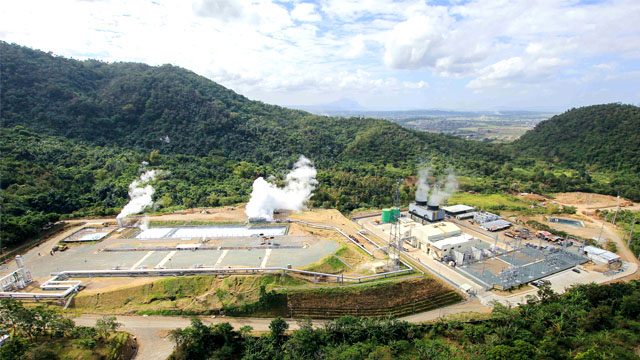SUMMARY
This is AI generated summarization, which may have errors. For context, always refer to the full article.

MANILA, Philippines – The Maibarara Geothermal Incorporated (MGI) of PetroGreen Energy, Incorporated (PGEC) said its exploration activities in Sto. Tomas, Batangas showed there is enough steam needed to proceed with its expansion project.
MGI operates a $78-million, 20-megawatt (MW) geothermal power plant in Barangay San Rafael, which started commercial operations on February 8, 2014, supplying 20-MW to the Luzon grid. It planned to expand to the power facility by 10MW more which could costs $25 million.
MGI is a joint-venture company owned by PGEC, 65%; Trans-Asia Oil & Energy Development Corporation, 25%; and PNOC Renewables Corporation, 10%. PGEC is a subsidiary of PetroEnergy Resources Corporation.
In a disclosure to the stock exchange Monday, June 15, PGEC said MGI has completed bore output testing that “confirmed sufficient steam supply under the wellheads for its 10MW Maibarara-2 (M2) expansion project.”
MGI started its expansion project in the second half of 2014 by drilling two new wells MB15RD and MB16D which were successfully completed 5 days and 14 days ahead of schedule, respectively.
MB16D was flow-tested from December 2014 to February 2015, while MB15RD underwent similar discharge tests from April to May 2015.
By end-May, MB15RD, which was originally designed and drilled as an injection well, had attained commercial wellhead pressure, mass flow, and MW output at full-bore opening.
“We are pleased with the outcome of MGI’s drilling and testing programs for its expansion project and the Department of Energy (DOE) looks forward to a new 10MW power station in MGI in 2017,” PGEC said.
While modest in size, MGI’s expansion unit combines the advantages of being base-loaded, renewable, and free of harmful greenhouse gas emissions. “The host local government unit (LGUs) can expect additional royalties and benefits when the new plant becomes operational,” said DOE Director Mario Marasigan of the Renewable Energy Management Bureau (REMB). – Rappler.com
Add a comment
How does this make you feel?
There are no comments yet. Add your comment to start the conversation.